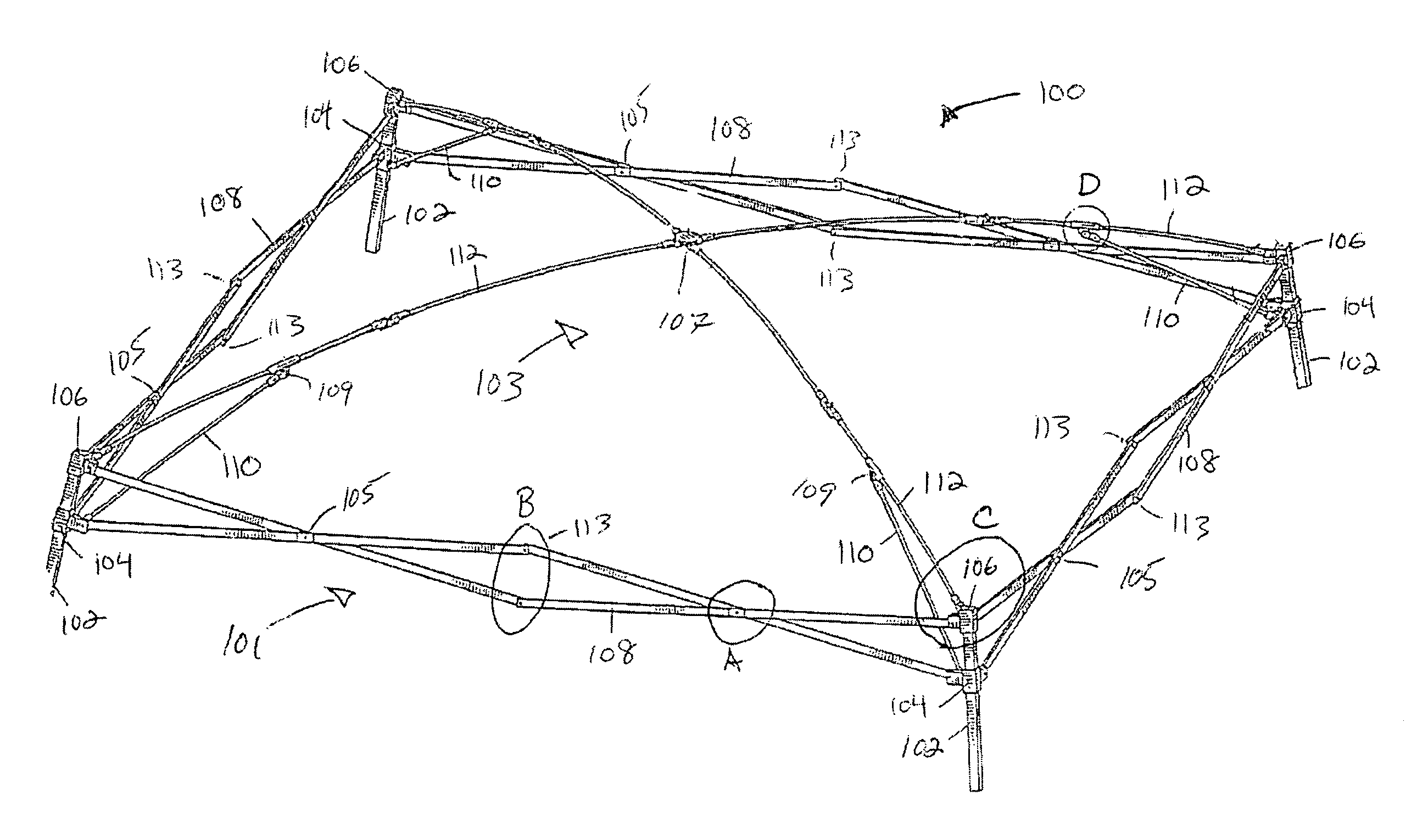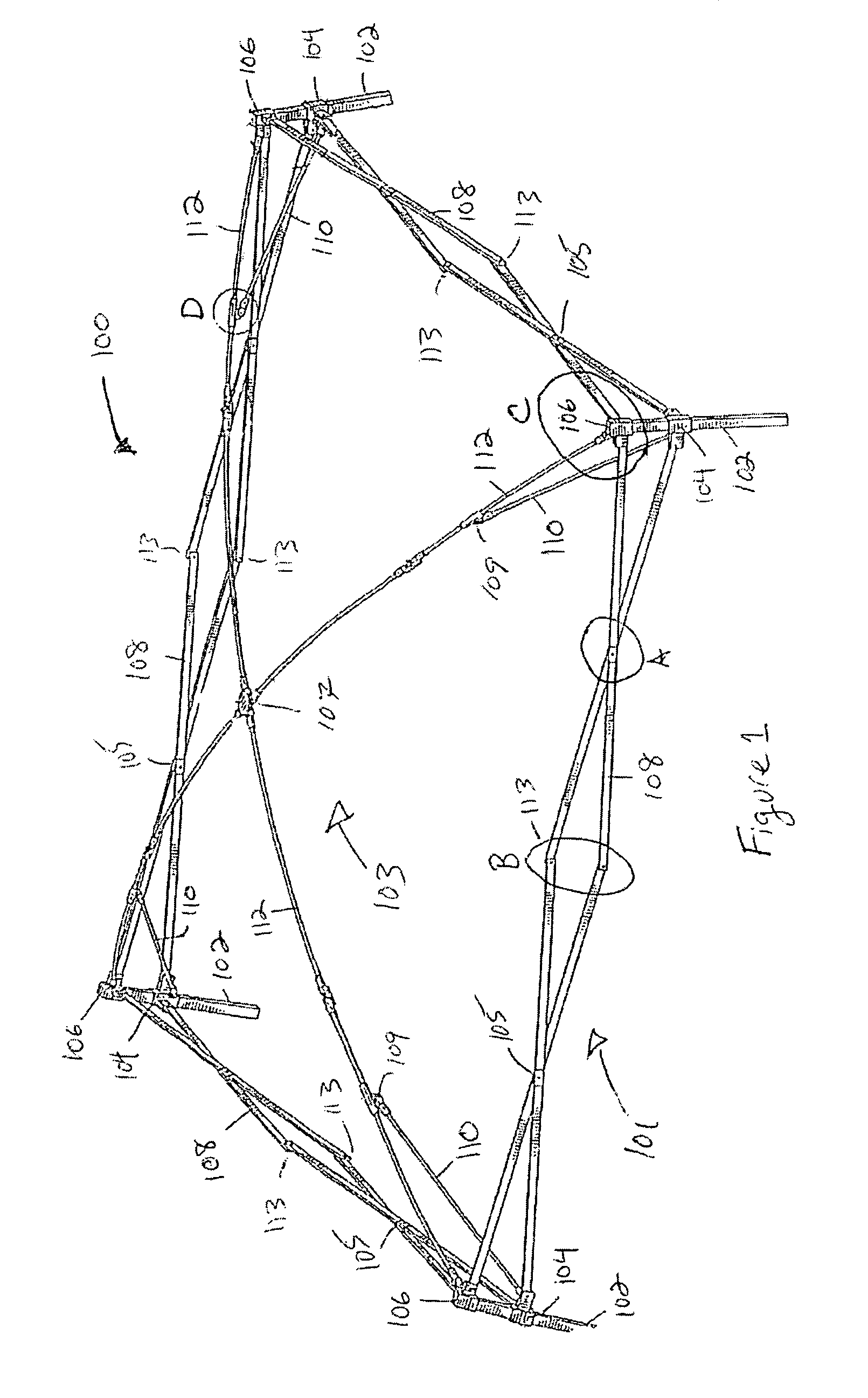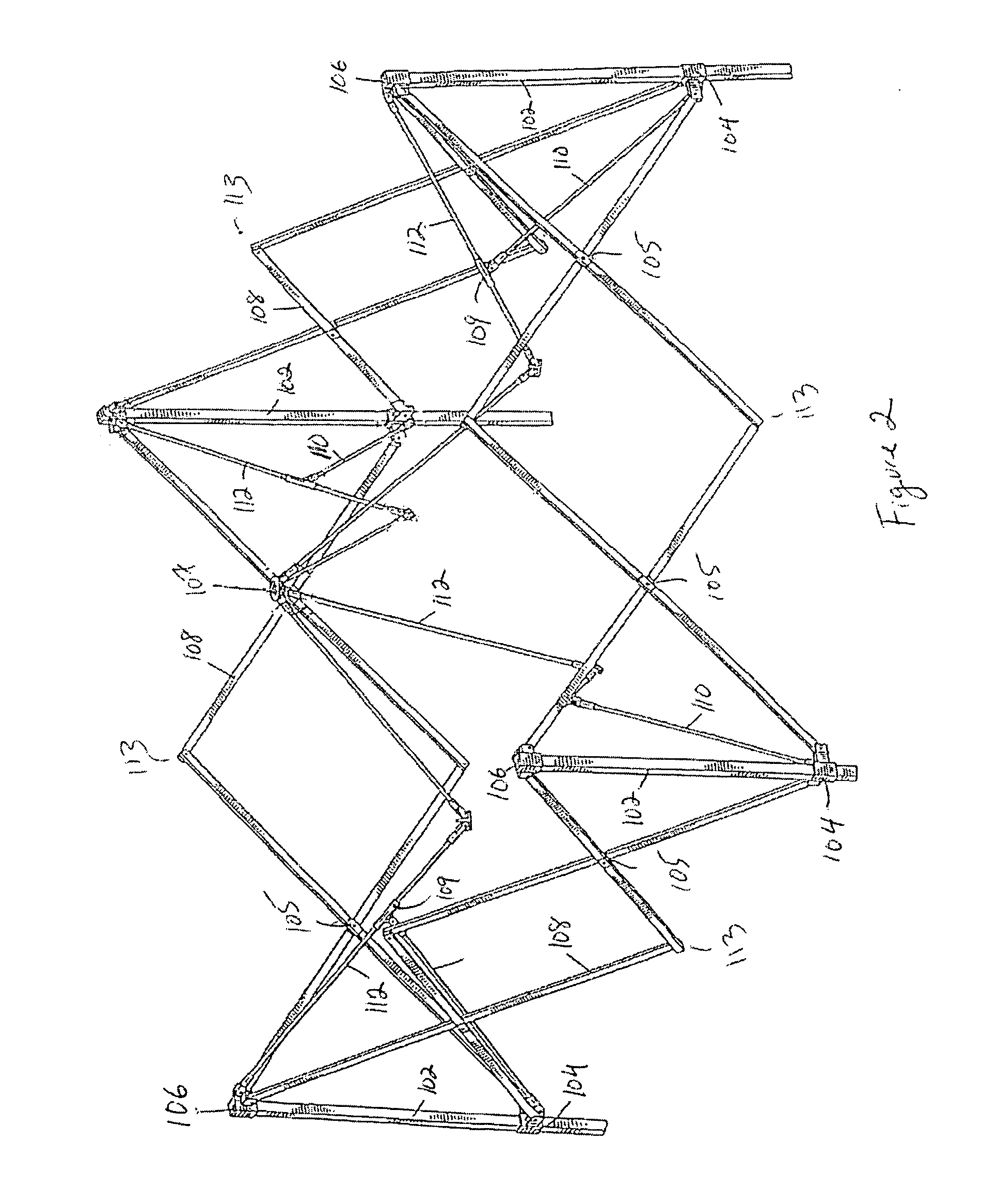Portable shelter with rolling element bearings
a technology of bearings and folding elements, applied in the field of shelters, can solve the problems of unsightly pockets, reduced tent headroom, unstable folding, etc., and achieve the effect of not reducing tent headroom, compact folding, and easy folding and unfolding
- Summary
- Abstract
- Description
- Claims
- Application Information
AI Technical Summary
Benefits of technology
Problems solved by technology
Method used
Image
Examples
Embodiment Construction
[0029]The following is a detailed description of the best presently known mode of carrying out the invention. This description is not to be taken in a limiting sense, but is made merely for the purpose of illustrating the general principles of the invention. The scope of the invention is defined solely by the appended claims.
[0030]As shown by way of example in FIG. 1, a shelter frame 100 in accordance with a first preferred embodiment of the present invention includes a lower frame member 101 and a canopy support 103. The lower frame member 101 includes four upwardly extending poles 102 that are connected to one another by four pairs of scissors-type (or x-type) cross joints 105. Each of the scissor-type cross joints 105 are pivotally secured to another linkage and to one of the poles 102. The cross joints 105 are secured to the poles 102 by fixed connectors 106, which are secured to the top of each pole, and sliding connectors 104 which slide along the poles. The exemplary canopy h...
PUM
 Login to View More
Login to View More Abstract
Description
Claims
Application Information
 Login to View More
Login to View More - R&D
- Intellectual Property
- Life Sciences
- Materials
- Tech Scout
- Unparalleled Data Quality
- Higher Quality Content
- 60% Fewer Hallucinations
Browse by: Latest US Patents, China's latest patents, Technical Efficacy Thesaurus, Application Domain, Technology Topic, Popular Technical Reports.
© 2025 PatSnap. All rights reserved.Legal|Privacy policy|Modern Slavery Act Transparency Statement|Sitemap|About US| Contact US: help@patsnap.com



